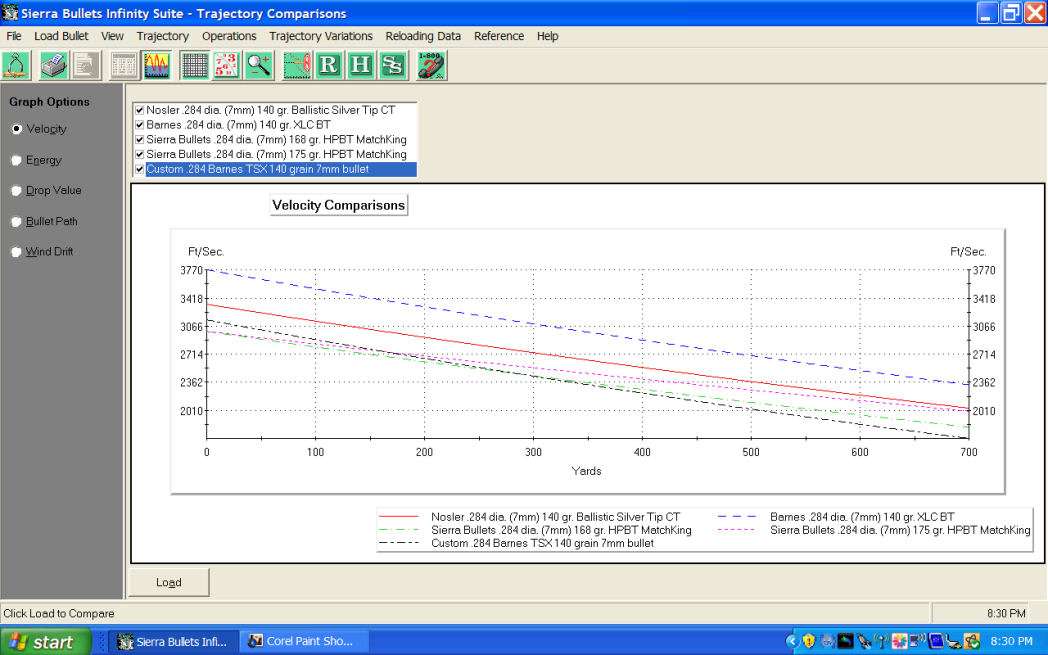To begin with, let's deal with the Barnes TSX bullet. Despite its grooves, its maximum velocity is unspectacular and its ballistic coefficient is pretty lame with a value of .412. So, you got a long solid copper bullet that SHOULD have a kick-butt BC up around .5-something, but it doesn't happen. Why? Four words: Bearing area, and parasitic drag. Yes the bullet is long, like a heavy Sierra Matchking, but it's got way more bearing area than a similar lead cored bullet. Result? More friction for the same weight. Secondly, once the bullet leaves the barrel, those grooves in the bullet greatly increase the parasitic drag. Instead of the air flowing smootly over the body of the bullet, those grooves create little air rotors along the body that increase the air friction and make it slow down faster, hence the BC of .412. So you got no superior velocity vs. other 7mm bullets, plus increased drag, according to the load data from the Barnes website.
Now, the real surprise is another Barnes bullet, which according to their website is no longer offered, and it's the Barnes 140 grain XLC HPBT bullet. This was very special design, with an undersize jacketed bullet, and a proprietary coating on it to make up the remaining diameter (so it's wasn't anything like a moly coating) so it was a few mils thick at least. The maximum velocity for this beast was a smoking 3777 FPS, which is a good 300 FPS over anything else I found. And the smooth HPBT design doesn't hurt either. At the time I thought that design and coating might be a gimmick that wasn't any better than a moly coated bullet, but I was wrong and apparently the general public thought likewise, so it got phased out. Based on the data, that's a real shame.
So - the data: Velocity: The Barnes TSX comes in slightly faster than the heavier 168 Sierra Matchking, and loses any advantage after about 300 yards. The 140 grain ballistic tip with its moly coating does 2nd best, but is still a pale shadow to the velocity of the Barnes XLC.

Bullet Drop:

The smoking velocity of the Barnes XLC makes it first, and the Barnes TSX comes in dead last. That's the parsitic drag slowing the bullet down.
Retained energy: Normally, the logest heaviest bullet wins this hands down, but the high velocity of the 140 grain XLC bullet keep it on top, which is very unusual. Apart from that, the 175 grain bullet is superior from the get-go.I can tell you between the .338 200 grain Ballistic Silvertip, the 250 grain Sierra MK, and the 300 grain Sierra MK, the difference with the 300 grain MK is HUGE at 1200 yards.






